Cost of Missed Appointments
At Advanced Sleep Medicine Services, like most healthcare providers, we go through a lot of work (data entry, insurance verification, scheduling, assigning staff) before each patient appointment. It kills us when the patient makes it all the way through this process and then no-shows to her appointment.
We could focus on attracting a new patients to make up for the missed appointments, or we can look for ways to ensure that as many patients as possible arrive, as scheduled, to complete their appointments so that they can receive the diagnosis and treatment they need and we can bill (and get paid) for the service. In the past three years as reimbursement has dropped, we’ve tried different strategies. In this blog post we outline our most recent attempts, what we’ve learned from them and finally, what’s working now.
Why do Patients No-Show to Their Appointments?
Over the years, we’ve boiled it down to these top reasons why a patient no-shows:
- Forgot about the appointment
- Is scared/anxious about the procedure
- Doesn’t want to pay (the co-pay or out-of-pocket/deductible due at time of service or later)
- Emergency (health, family, work, personal, transportation issue)
- Doesn’t care/no longer urgent (don’t appreciate the need for services or their medical condition)
While we don’t expect to eliminate all no-shows, ever, we can reduce no-shows for many of these reasons.
What’s an Acceptable No-Show Rate?
Sleep Centers: We’ve heard from other sleep labs and those that analyze the sleep medicine industry that 14% is the average no-show rate. We’ve noticed more no-shows, cancellations and refusals to schedule at all as more health insurance plans have higher deductibles, co-pays and authorization requirements for services, like sleep studies.
Primary Care: Primary care medicine also struggles with no-shows. There are several studies investigating the prevalence of no-shows based on patient demographics (age, urban vs. rural locations) and health insurance. One study of no-shows in primary care residency programs looked at 141 practices and found an average of 15% no-shows with higher rates for new patients and Medicare patients.
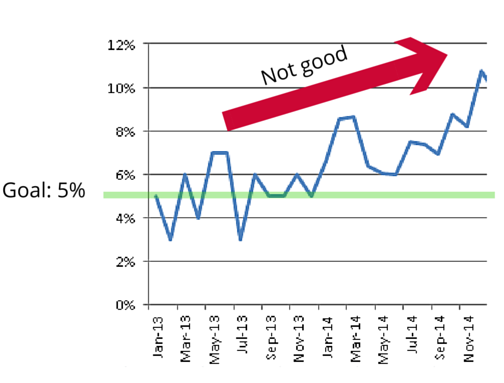 Our experience: We aim for a 5% no-show rate. This has been our goal for the past four years or so. In the face of dropping reimbursement and increasing out-of-pocket charges for patients, it’s become more and more challenging to hit our goal. Here’s our no-show trend 2013-2014 and the reason why we’ve overhauled our appointment processes to reduce our no-shows as much as possible.
Our experience: We aim for a 5% no-show rate. This has been our goal for the past four years or so. In the face of dropping reimbursement and increasing out-of-pocket charges for patients, it’s become more and more challenging to hit our goal. Here’s our no-show trend 2013-2014 and the reason why we’ve overhauled our appointment processes to reduce our no-shows as much as possible.
How We Track Appointment No-Shows
Our technicians are responsible for notifying us when a patient does not arrive for her appointment. For overnight sleep studies, we have created a part-time position that we call “patient support” to take patient calls surrounding their appointment start times. This helps patients who are lost, can’t access the facility, have a last-minute question about their upcoming appointment and more. We call each patient if it appears that he or she isn’t coming to the appointment.
If the patient truly no-shows, we call the patient the next morning and attempt to reschedule. The schedulers are allowed to use their discretion when deciding whether or not to reschedule a patient. They consider the patient’s history of showing up for or missing appointments in the past and the reason for missing the most recent appointment.
Our daily and monthly metrics include the no-show rate (no-show appointments divided by scheduled appointments). We celebrate days with zero no-shows and cringe when the morning’s report shows as high as 15 or 20% no-shows (it happens).
Ways We’ve Tried to Reduce Appointment No-Shows
Charging a No-Show Fee
Until just over a year ago, we threatened a $200 cancellation fee for missed appointments. Sometimes we would bill it to the patients. It worked reasonably well at scaring patients into showing up for their appointments. But it also scared our patients. We would have sick patients (colds, flus, etc.) arriving for appointments. We had patients calling us the day of their appointment begging and crying to reschedule their appointments because of a family emergency. Or older patients calling in the day after a missed appointment petrified that we would bill them $200 they absolutely could not afford for an appointment that they honestly did not mean to miss.
It just didn’t feel good. It didn’t generate any good will. Our schedulers didn’t like being enforcers. In some cases, it wasn’t allowed by our contract with the health insurance plan (we didn’t bill these patients but they still saw the threatening language).
Not Charging a No-Show Fee
We eliminated our no-show fee in January 2015. This was the result of an in-depth analysis of our current scheduling script, our confirmation and reminder call process, the logistics of billing no-show fees to patients and trends (by location, insurance plan, how far out each appointment was scheduled). We agreed to eliminate our $200 cancellation fee.
Policy of Not Scheduling Missed Appointments
We needed some teeth once we eliminated our no-show fee so we drafted a policy that we would not schedule any missed appointments. The problem was that we did schedule missed appointments. Some patients had good reasons for missing appointments, some patients were repeat offenders but in our haste to fill appointment slots, we rescheduled them for a third, fourth or even fifth time. The difference was that we didn’t actively call no-show patients to reschedule. We only rescheduled if the patient called us directly.
Double Booking
We tried double booking in our busiest locations. Since at times we’ve had really high same-day cancellations, we figured this would reduce our risk of missing appointment opportunities. When it worked, we were thrilled. Unfortunately, when it backfired and two patients showed up for the same appointment time because one didn’t receive our last-minute cancellation call, we were sunk. You can’t apologize your way out of that one.
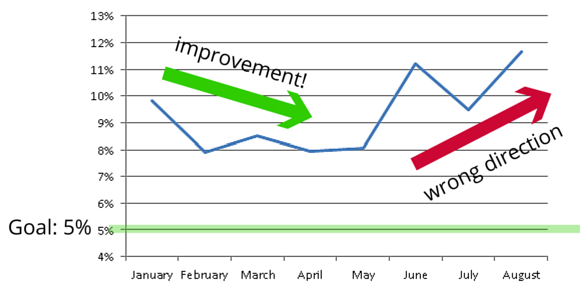 Results:
Results:
We saw a slight drop in no-shows in the first quarter of 2015 (this is also the slowest time of the year for us) and in June no-shows increased. We approached 12% no-shows in August 2015- our highest rate ever. We were in crisis mode.
New Strategy for Reducing Appointment No-Shows
Cancellation list
Especially for our busiest locations, we keep running cancellation lists of patients who are willing to come in with little advanced notice. This doesn’t reduce our no-shows, but when we get a last-minute cancellation we can be successful finding a same-day replacement.
Up-to-date patient information
We request email addresses from our patients and confirm all phone numbers during each phone call. We still struggle with disconnected phone numbers, but at least we have multiple options for contact.
Collecting fees (deductible and cash-pricing) upfront
We’ve had great success collecting patient payments up front. This eases the administrative burden on our technicians, reduces our patient collections fees and gives the patient even more incentive to show-up for the scheduled appointment. If the patient isn’t willing or able to pay upfront, she probably won’t be willing or able to pay 1-6 months later once the insurance claim has been processed. We just can’t afford to provide services at no-charge.
Focus on scheduling more appointments in the near-term even if that means fewer appointments scheduled per day
Focusing on daily scheduling quotas is an important piece of managing our front office, but not the only piece. Due to appointment availability for some services and some locations, we’ve scheduled patients several weeks and even months out for appointments. These patients are much more likely to forget not only the date of their appointment but also the reason for it. We lose the urgency when we schedule appointments too far out.
To shift the focus to near-term appointment availability, we take a daily look at our appointment openings by location over the next nine days. At the same time we review our scheduling productivity (we drill down by individual scheduler) and our call volume.
Appealing to patients’ human side (aka shaming)
Empathy, manors and ethics are subjective and clearly vary from person to person; however, we’re finding that making a personal request of each patient to honor his or her commitment to showing up- on time- to her appointment has made a HUGE difference in our no-shows.
Once the patient has selected a date, time and location for her appointment and other logistics are covered, we ask each patient to commit to keeping her appointment and to let us know as soon as possible, preferably at least two business days in advance, if she needs to reschedule her appointment.
Reminders (email, auto-phone, manual-phone and text)
Numerous studies show the impact of reminder calls (manual and/or automated) on improving no-show rates. We use a combination of automated and manual phone calls, emails and texts for patients who consent to receive these types of communication.
Results of Our New No-Show Policy
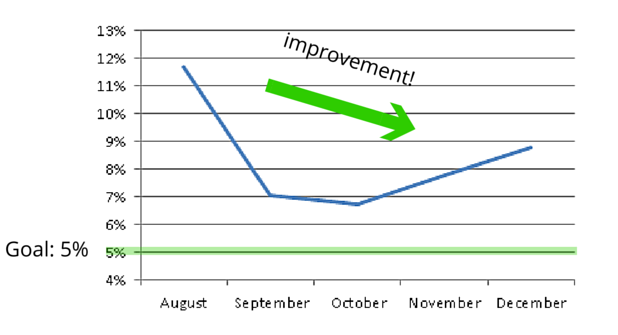 In the last five months of 2015, our no-shows have dropped from almost 12% to an average of 7.6% for the rest of the year. We had a slight increase in December approaching 8% no-shows (there may be seasonal issues with the end-of-year holidays. As of the publishing of this post in mid-January 2016, we’re at 7% no-shows.
In the last five months of 2015, our no-shows have dropped from almost 12% to an average of 7.6% for the rest of the year. We had a slight increase in December approaching 8% no-shows (there may be seasonal issues with the end-of-year holidays. As of the publishing of this post in mid-January 2016, we’re at 7% no-shows.
How Do We Reduce the No-show Rate Even More?
Our goal is still 5% or less. How do we get there?
A 2004 study published in the Annals of Family Medicine (Why we don’t come: patient perceptions on no-shows) interviewed patients who admitted to previously not keeping scheduled medical appointments. 65% of the participants mentioned emotional barriers to keeping appointments, including negative emotions about going to see the doctor. Some participants explained that they felt an urgent need to schedule their appointment when their illness struck, but they hesitated to keep the appointment if several days passed between the time of scheduling and the date of the appointment. This gives us two other areas to work on:
- Make a more compelling case with each patient about the importance of scheduling and completing her service. With sleep studies, it can be challenging because many patients have suffered for years (even decades) without diagnosis or treatment and may feel no urgency to make any change. Education is key.
- Decrease the time between scheduling and the date of the appointment. We have challenges with capacity and demand in certain areas which we will work to improve in 2016. Ideally, we can offer each patient an appointment as soon as she is willing to seen and the location that is most convenient.
Conclusion
Reducing no-show rates in healthcare practices will be an on-going issue requiring constant investigation and creative solutions. Diligent tracking of no-show rates and regular analysis of known factors is essential.
What is your no-show rate? What works for your practice? Have you experimented with other ways of reducing no-shows?
Ready to schedule an appointment for your patient?
Sources:
Evans, M. When revenue is a no show. Accessed January 2016 from http://www.modernhealthcare.com/article/20121103/MAGAZINE/311039954
Accessed January 2016.
Johnson BJ, Mold JW, Pontious JM. Reduction and management of no-shows by family medicine residency
practice exemplars. Ann Fam Med. 2007;5(6):534-9.
Lacy NL, Paulman A, Reuter MD, Lovejoy B. Why we don’t come: patient perceptions on no-shows. Ann Fam
Med. 2004;2(6):541-5.
Parikh, Amay et al. The Effectiveness of Outpatient Appointment Reminder Systems in Reducing No-Show
Rates. The American Journal of Medicine , Volume 123 , Issue 6 , 542 – 548
Other posts you may find interesting:

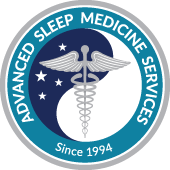
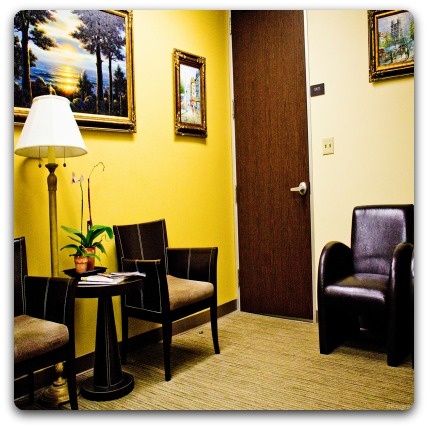
Comments
mario zamora
Posted on August 03, 2017I am the manager for our hospital base sleep center and I am trying to get the most recent data on the national percentage of No Shows in the Sleep Center. Do you know where i can find this information. Your article quotes 14% as a national level this was 2015 data. I was wondering if you had any more recent information on that.